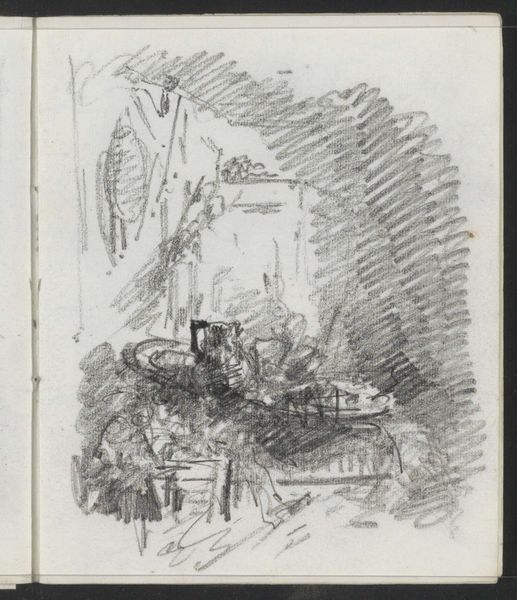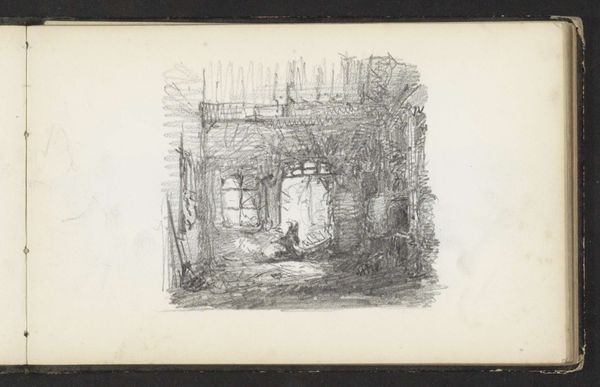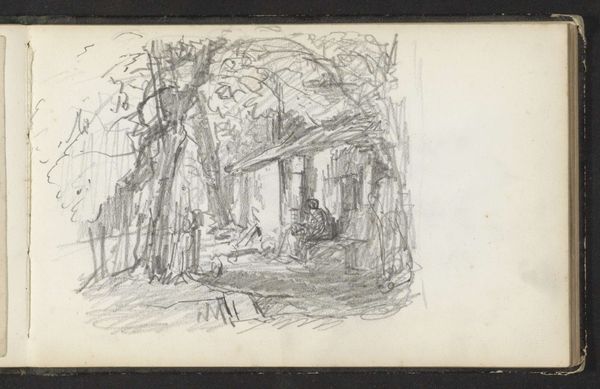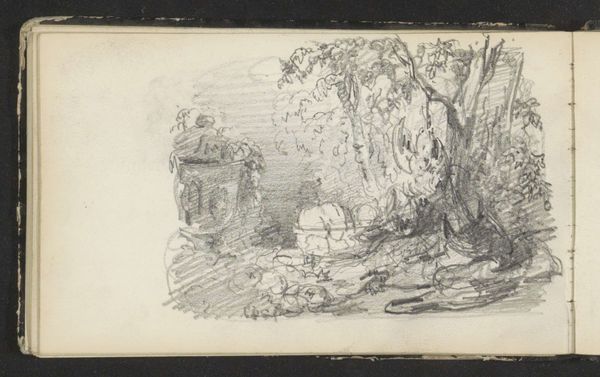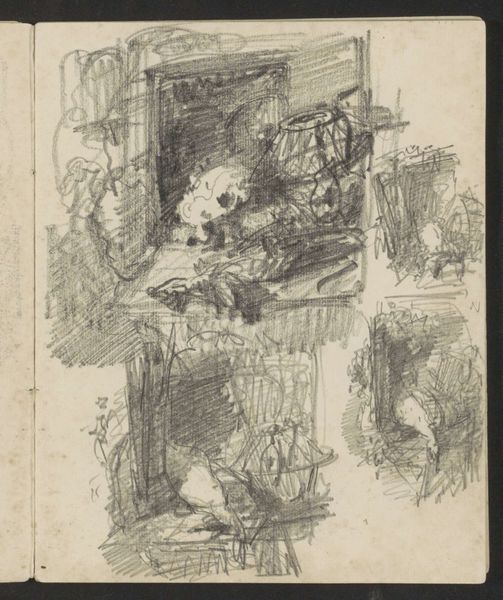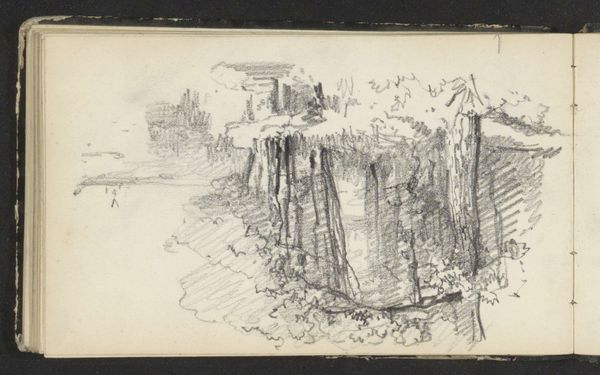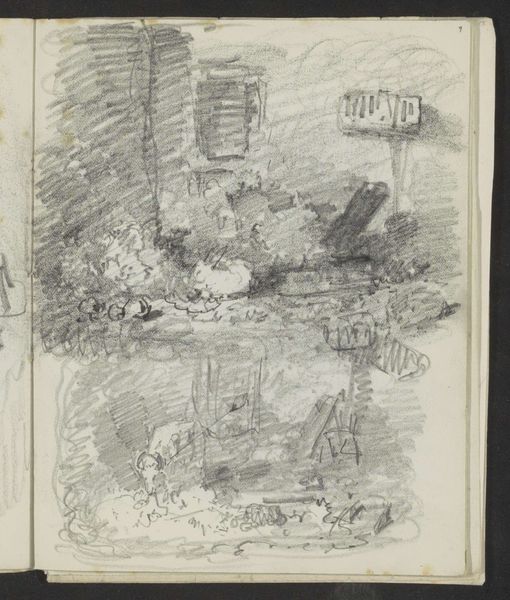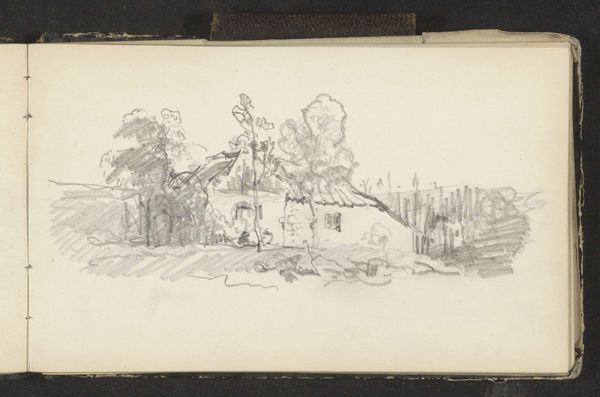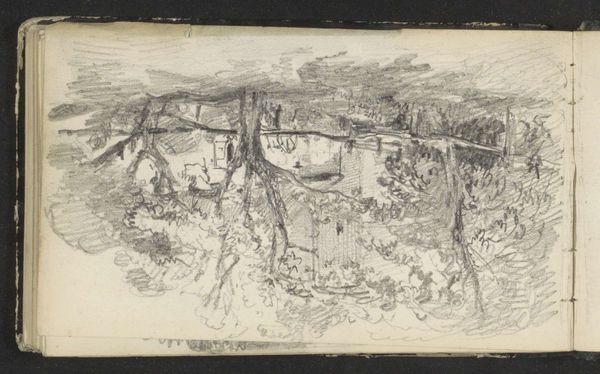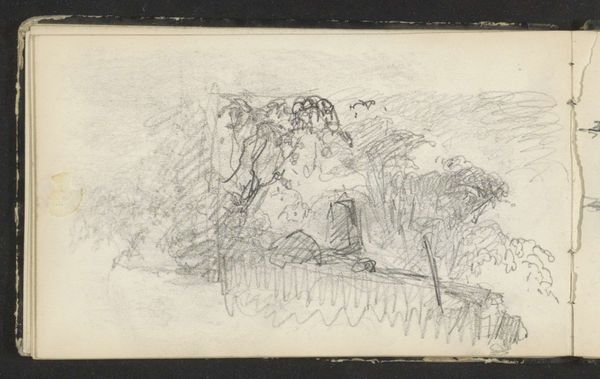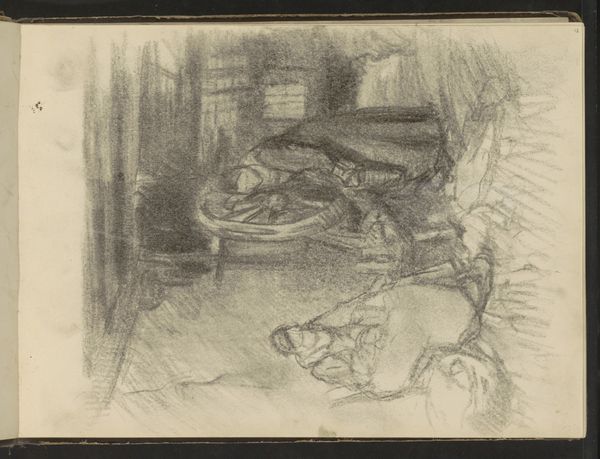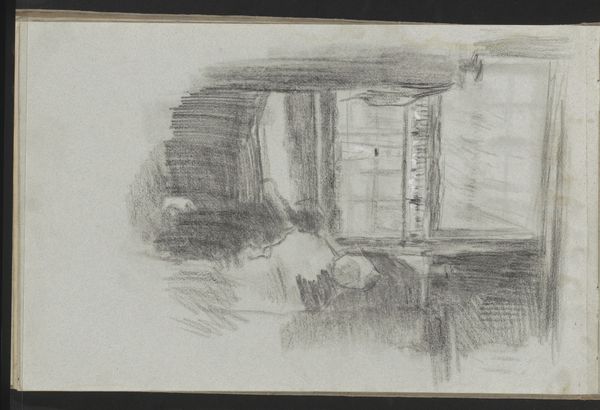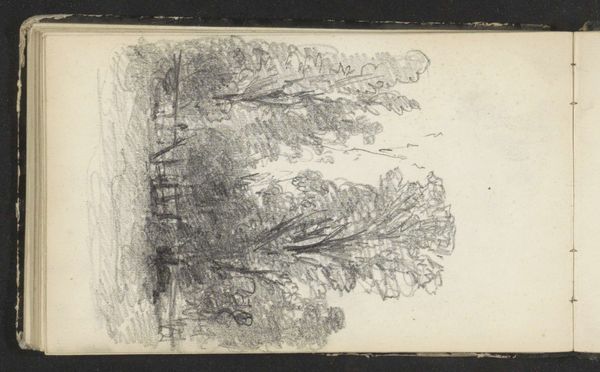
drawing, paper, pencil
#
portrait
#
drawing
#
figuration
#
paper
#
pencil
#
realism
Copyright: Rijks Museum: Open Domain
Editor: We're looking at Maria Vos’s "Opslagruimte," dating from between 1834 and 1906, housed here at the Rijksmuseum. It’s a pencil drawing on paper, and I’m struck by the almost dreamlike quality of the sketchy lines. What do you see in this piece, considered purely in terms of form? Curator: The composition is quite interesting. Vos utilizes the stark contrast between light and shadow to define form, wouldn't you agree? Observe how the depth of tone is achieved through dense, layered pencil strokes. What effect does this specific arrangement of light and shadow have? Editor: I guess it flattens the space while simultaneously suggesting three dimensions. The shading creates volume, but the lack of precise detail makes it difficult to pinpoint what exactly is being depicted. Curator: Precisely. The drawing prioritizes the modulation of light and texture over meticulous representation. Notice also the expressive quality of the lines themselves. The variation in weight and direction imparts a sense of energy and movement to the overall composition. How does this affect the mood of the piece, do you think? Editor: It adds to the ethereal quality. Because nothing is really pinned down in this representational sense, it lets the viewer focus more on pure visual experience, on shapes and contrasts. It makes it dynamic, even though it's a study. I hadn't thought about drawing in such purely formal terms before. Curator: The materiality of pencil on paper has a certain rawness and directness. It offers insight into Vos' artistic process. So this drawing makes for a compelling study in form, wouldn’t you agree?
Comments
No comments
Be the first to comment and join the conversation on the ultimate creative platform.
